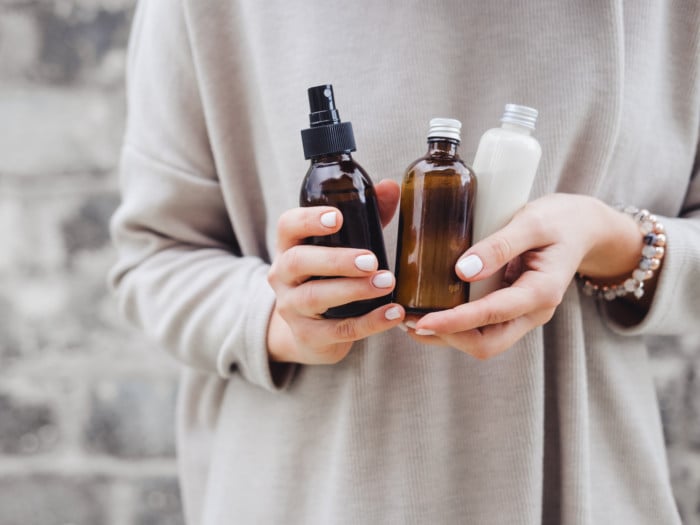Essential oils offer a wide range of benefits and can support various health challenges ranging from stress, anxiety, and sleep to headaches and immune function.
The 3 Ways You Can Use Essential Oils
Essential oil use can be simple with a few fundamental guidelines. Aromatic, topical, and internal are the three basic application methods for applying essential oils.
Aromatic
Aromatic use is powerful and can be as simple as adding a drop to the hands, rubbing them together, and breathing in, or inhaling from the bottle. Diffusing essential oils is another way to use them aromatically. Diffusers disperse the essential oils into the air, often with water, for inhalation and health benefits. [1] [2]
Topical
The topical use of essential oils refers to applying them to the skin. A small amount of oil goes a long way, especially with pure essential oils. Diluting essential oils with a carrier oil is recommended to establish a barrier for the skin and increase absorption. It may seem counterintuitive but diluting essential oils prior to a topical application does not make them less effective. [3]

Thieves essential oil trio pack Photo Credit: Shutterstock
Since essential oils evaporate quickly, using a carrier oil allows them to stay on the skin longer, thus being able to use them less often. Diluting essential oils prior to the topical application also decreases the risk of sensitivity to the skin and adverse reactions. Popular carrier oils are often vegetable-based and include coconut oil, avocado oil, jojoba oil, almond oil or olive oil. It is good to note that there are some essential oils that may cause a warming effect on the skin and should always be diluted. Cassia, cinnamon, oregano, thyme, clove, and lemongrass are a few examples.
For those with sensitive skin, a patch test can be performed on a small area of the skin. If sensitivity occurs within 24 hours, discontinue the use of that oil.
Internal
Internal use by means of ingesting an essential oil can be another powerful way to utilize them. Research is strongly encouraged as essential oils are not consistently regulated, therefore, not all brands are created equally. It’s also important to note that not all essential oils are safe for internal use. The oil should also be approved for dietary use. Follow up with your healthcare provider with any questions or concerns.
Why Quality Is Important
The purity of essential oil is crucial. Where a plant grows and is harvested is an important factor when it comes to purity as it affects the chemical composition of the essential oil. An essential oil that has been grown in its optimal growing habitat will produce an oil with optimal health benefits for support. When choosing an essential oil brand, it is wise to select a brand that has been tested both in-house and by a 3rd party, laboratory to ensure its purity. [4]
According to the Aromatic Plant Research Center (APRC), “experts estimate that 80% of commercially available “pure” essential oils are adulterated in some way”. Synthetic ingredients, fillers, and contaminants not only reduce the health benefits of the oil, but they can also increase the risk of adverse effects and skin irritations. [5]
Dos and Don’ts of Essential Oil Use
Let us take a look at the dos and don’ts for the use of essential oil.
Dos
- Consistency is important when using essential oils for a specific need. The body begins metabolizing essential oils as soon as they are applied so it is recommended to use them every few hours as needed. A typical dose of essential oil is 1-2 drops.
- Use caution when applying citrus oils to exposed skin. Avoid direct sunlight for 12-36 hours after application, depending on the essential oil.
- Everyone responds to essential oils differently. The oil that works for someone else may not work for you as your body chemistry is different. Try a different oil if one does not bring the intended result.
- Educate yourself. The information found online can be overwhelming. Find a brand that you trust and check out the resources and education they offer.
- Store essential oils out of reach from children. Essential oils should also be stored in an area away from high heat and direct sunlight.
- Use your essential oils consistently and proactively. The body responds to essential oils much better when used regularly versus only when the body is in crisis.
Don’ts
- Avoid putting essential oils directly in the eyes, ears or nose. If this happens, flush with a carrier oil and not water. It is also wise to avoid putting essential oils on broken or damaged skin.
- Refrain from adding water if you experience any sensitivity when using essential oils topically. This will drive the oils deeper into the skin. Instead, apply carrier oil to reduce any discomfort. A warm, moist compress may be used if the desire is to drive the oil deeper into the skin.
